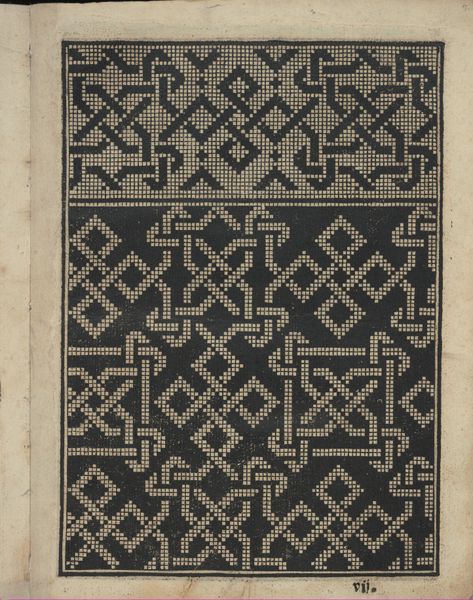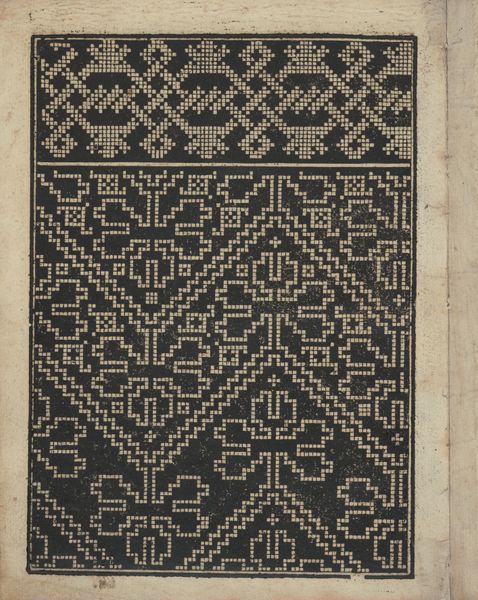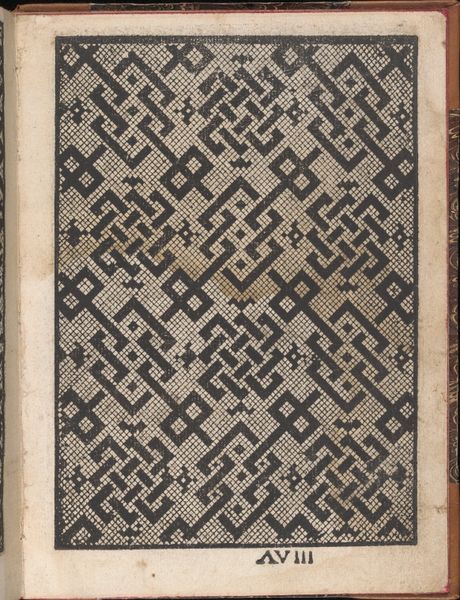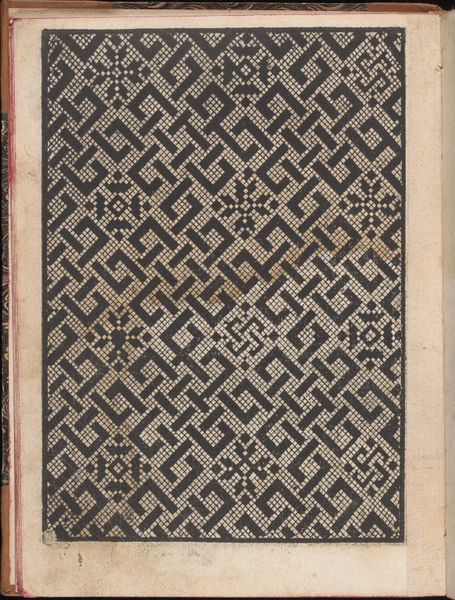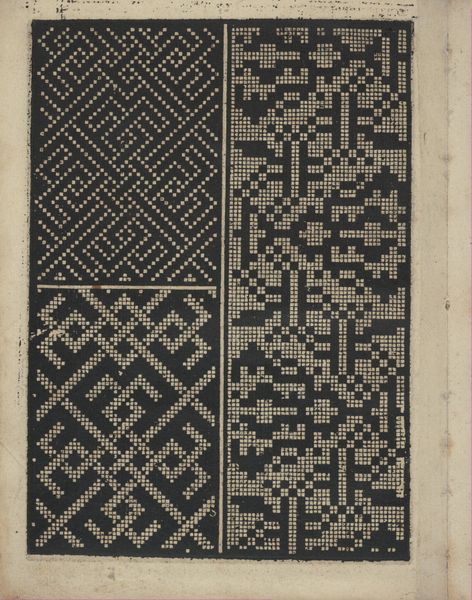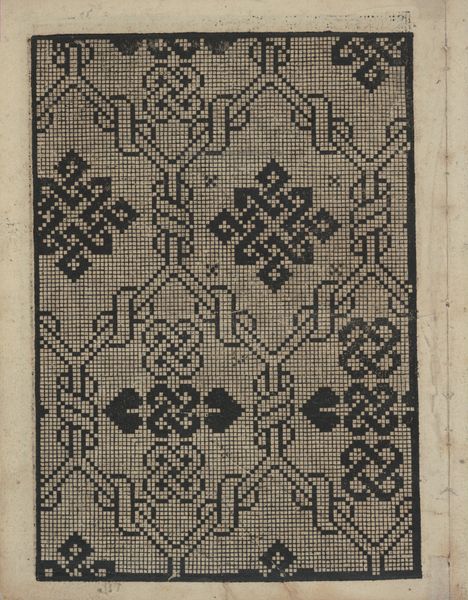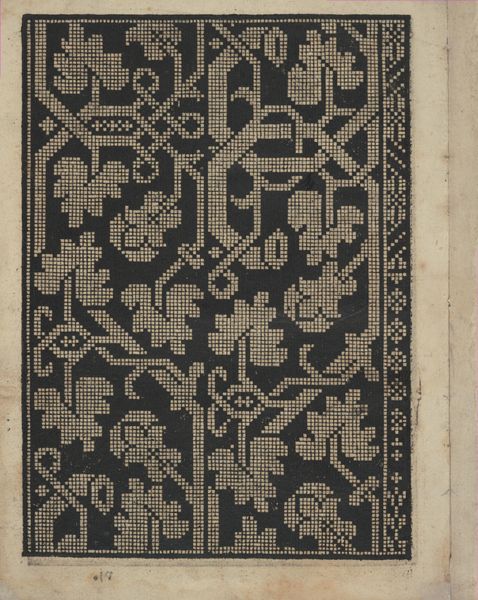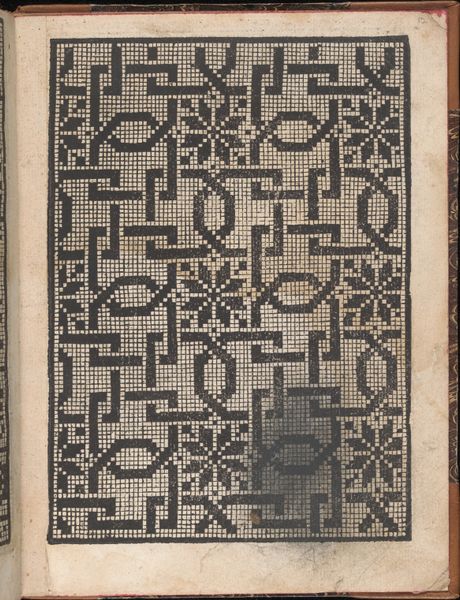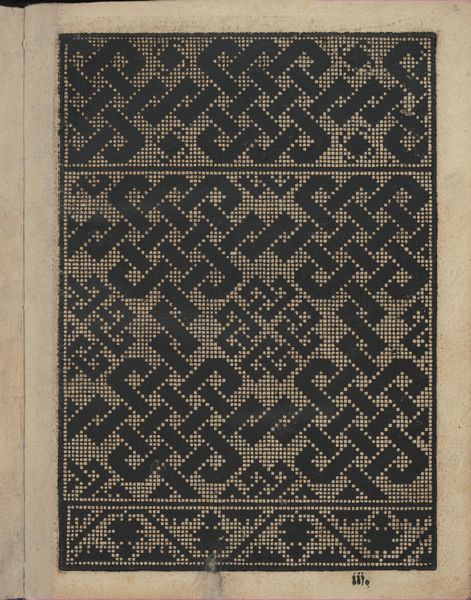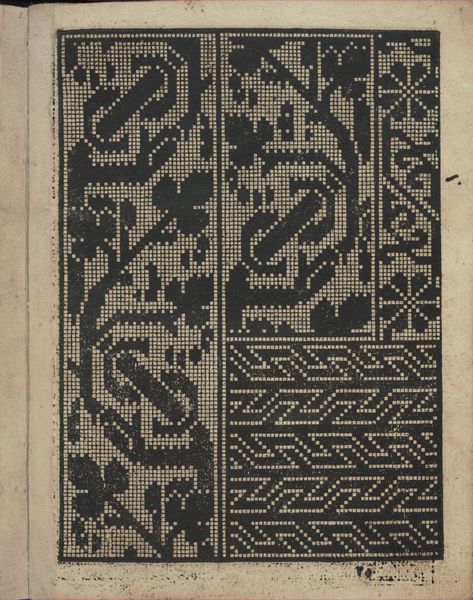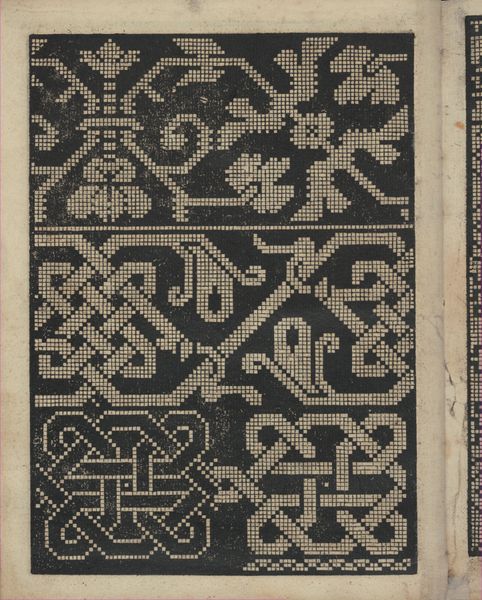
Libbretto nouellamete composto per maestro Domenico da Sera...lauorare di ogni sorte di punti, page 19 (verso) 1532
0:00
0:00
drawing, graphic-art, print
#
drawing
#
graphic-art
# print
#
book
#
pattern
#
11_renaissance
#
geometric
#
italian-renaissance
Dimensions: Overall: 8 1/16 x 6 5/16 in. (20.5 x 16 cm)
Copyright: Public Domain
Editor: This is page 19 from "Libbretto nouellamete composto per maestro Domenico da Sera...lauorare di ogni sorte di punti," a printed book from 1532. It's a series of geometric patterns. I find the patterns strangely compelling, almost like an early form of digital art. What is your take on this page? Curator: It's more than just decorative, isn't it? This pattern book highlights the agency of women in Renaissance society. Needlework was central to their lives – not merely domestic labour, but also a means of self-expression and even economic power. Editor: Economic power? How so? Curator: By controlling design. Think about the complex social and economic relationships embedded in creating textiles. Who designed the patterns, who produced them, and who wore them? These weren’t passive acts. Owning and reproducing these designs allowed women a form of control over their own representation, in a time where avenues for such were very limited. The geometric designs are particularly interesting because of their adaptable nature; could these be read as early algorithms, with patterns infinitely variable through alterations? Editor: So you're suggesting the act of creating these patterns was a subversive act? Curator: Subversive is perhaps too strong, but these intricate patterns allowed for individuality in a constrained sphere. Think of the act of recreating them, making conscious decisions to diverge or modify. It highlights a silent dialogue within the social norms of the time. Editor: That really changes my perspective. I was seeing it as just an aesthetic object, but now I see it as something much more. Thank you! Curator: And thank you, for being open to reframing our perspective of the artwork! It encourages me to reflect how art creates space for discussion about power dynamics.
Comments
No comments
Be the first to comment and join the conversation on the ultimate creative platform.
